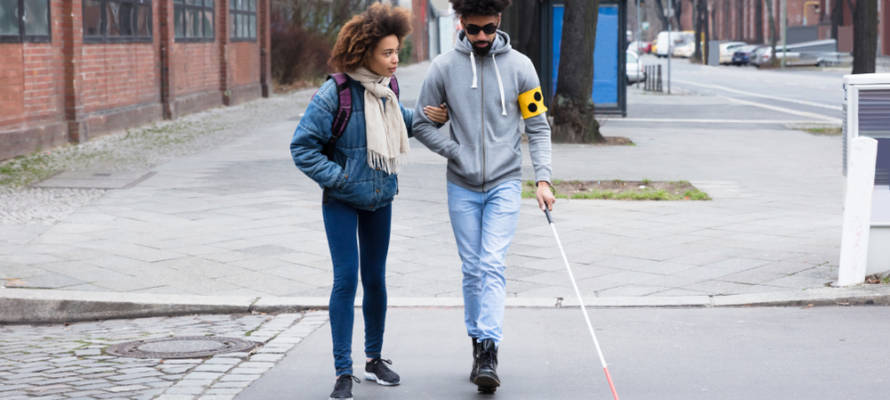Researchers found that the brain is able to integrate natural and artificial vision, which brings restoration of sight to the blind one step closer.
By United with Israel Staff
A new study published in the journal Current Biology by researchers from Israel’s Bar-Ilan University and Stanford University may represent a major breakthrough for people with macular degeneration (AMD), which causes blindness in millions of people throughout the world. Researchers hope the advance will help this population see again.
In the study, called “Cortical Interactions between Prosthetic and Natural Vision,” researchers found for the first that the brain is able to integrate natural and artificial vision, while maintaining processing information crucial for vision.
“We used a unique projection system which stimulated either natural vision, artificial vision or a combination of natural and artificial vision, while simultaneously recording the cortical responses in rodents implanted with a subretinal implant,” said Tamar Arens-Arad, who conducted the experiments as part of her doctoral studies.
The research was done in Professor Yossi Mandel’s Bar-Ilan University lab at the School of Optometry and Vision Science and Mina and Everard Goodman Faculty of Life Sciences and the Institute of Nanotechnology and Advanced Materials (BINA) at Bar-Ilan University. The research was carried out in collaboration with Professor Palanker of Stanford University and conducted by Arens-Arad in collaboration with Dr. Nairouz Farah, Rivkah Lender, Avital Moshkovitz and Thomas Flores.
“These pioneering results have implications for better restoration of sight in AMD patients implanted with retinal prosthetic devices and support our hypothesis that prosthetic and natural vision can be integrated in the brain,” said Professor Mandel, head of Bar-Ilan University’s Ophthalmic Science and Engineering Lab and lead author of the study. “The results could also have implications for future brain-machine interface applications where artificial and natural processes co-exist.”
Professor Palanker developed the implant, which is composed of dozens of tiny solar cells and electrodes.
According to News Medical Life Sciences (NMLS), AMD “is the most common cause of severe vision loss in the Western world among those aged 50 and over, and its prevalence increases with age.”
This study’s “advance[s] in artificial retina implants may lead to effective treatment,” NMLS noted.
The macula, which is the central area of the retina in the eye, processes most of the information that reaches the brain. Through this process, one can see. Should the center of the retina be damaged, precise vision is impaired. However, peripheral vision remains normal.
Should the retina’s light receptors (photoreceptors) get damaged, “an artificial retina — a device built from tiny electrodes smaller in width than a hair — may be implanted,” reported NMLS.
“Activating these electrodes results in electrical stimulation of the remaining retinal cells and results in visual restoration, albeit partially. AMD patients implanted with an artificial retina possess a combination of artificial central vision and normal peripheral vision. This combination of artificial and natural vision is important to study in order to understand how to help the blind,” the NMLS report concluded.
Send 'Warm Winter' Care Packages to Israeli Soldiers - They are Cold!
We are honored to thank the young men and women of the IDF who risk their lives every day to defend the citizens of Israel.
Join us in sending winter care packages and personal notes of support to Israeli soldiers who are out in the cold all day.
Warm up a soldier's heart with essential winter wear including fleece jackets. Keep an entire unit warm by ordering 10 packages... The soldiers truly appreciate your love and concern!

